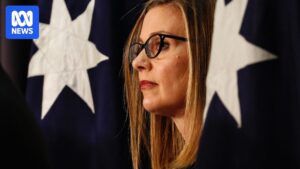
Australia’s national scientific agency, the Commonwealth Scientific and Industrial Research Organisation (CSIRO), is set to cut up to 350 research roles starting next year. This move comes as the agency grapples with budgetary constraints and seeks new funding sources. The announcement was made during a town hall meeting where CSIRO leaders outlined the challenging times ahead.
In addition to the job cuts, CSIRO plans to secure between $80 million and $135 million annually to renovate its aging property portfolio. Approximately 80% of CSIRO’s 800 properties are nearing the end of their life cycles. In a statement, CSIRO Chief Doug Hilton emphasized that these changes aim to position the agency for future success by focusing on its unique strengths and addressing national challenges.
Impact on Research and Public Reaction
CSIRO’s decision to cut jobs will significantly affect several research areas, including health and biosecurity, agriculture and food, and environmental research. The CSIRO Staff Association Secretary, Susan Tonks, criticized the Albanese government for these cuts, stating they exceed those made under the Abbott Coalition government.
“These are some of the worst cuts the CSIRO has ever seen, and they’re coming at a time when we should be investing in and building up public science,” Tonks remarked.
Meanwhile, the Australian Academy of Technological Sciences and Engineering (ATSE) expressed disappointment over the job cuts. ATSE President Dr. Katherine Woodthorpe highlighted the need for long-term planning and investment in science and technology to boost productivity.
“It’s a very disappointing situation to be in—where the nation’s science agency has its capacity for research and innovation reduced,” Dr. Woodthorpe said.
Children’s Sand Imports Under Scrutiny
In a related development, the Australian Border Force (ABF) has announced that all imports of children’s sand products will now be classified as “high-risk” and require proof of being asbestos-free. This decision follows recent discoveries of asbestos contamination in colored sand products used in schools across Australia.
Several major retailers, including Officeworks, Target, and Kmart, have recalled these sand products after tests confirmed asbestos presence. The Australian Competition and Consumer Commission (ACCC) assured that respirable asbestos had not been detected in the tested samples, reducing immediate health risks.
“The release of respirable asbestos fibers is unlikely to occur in its current state unless the sand is processed by mechanical means such as crushing or pulverizing,” the ACCC stated.
Historical Context and Future Implications
The CSIRO’s current financial challenges are not unprecedented. The agency has faced similar budgetary constraints in the past, notably during the Abbott government, which led to significant public outcry and debates about the importance of investing in scientific research.
Looking ahead, the CSIRO’s restructuring and the increased scrutiny on children’s sand imports highlight broader issues of funding and safety in public sectors. These developments underscore the need for robust policies and strategic investments to ensure the sustainability and safety of national scientific and educational resources.
As the CSIRO navigates these changes, stakeholders will be closely watching the agency’s ability to maintain its research capabilities and adapt to evolving expectations. The government’s response to these challenges will likely influence public opinion and policy decisions in the coming years.







